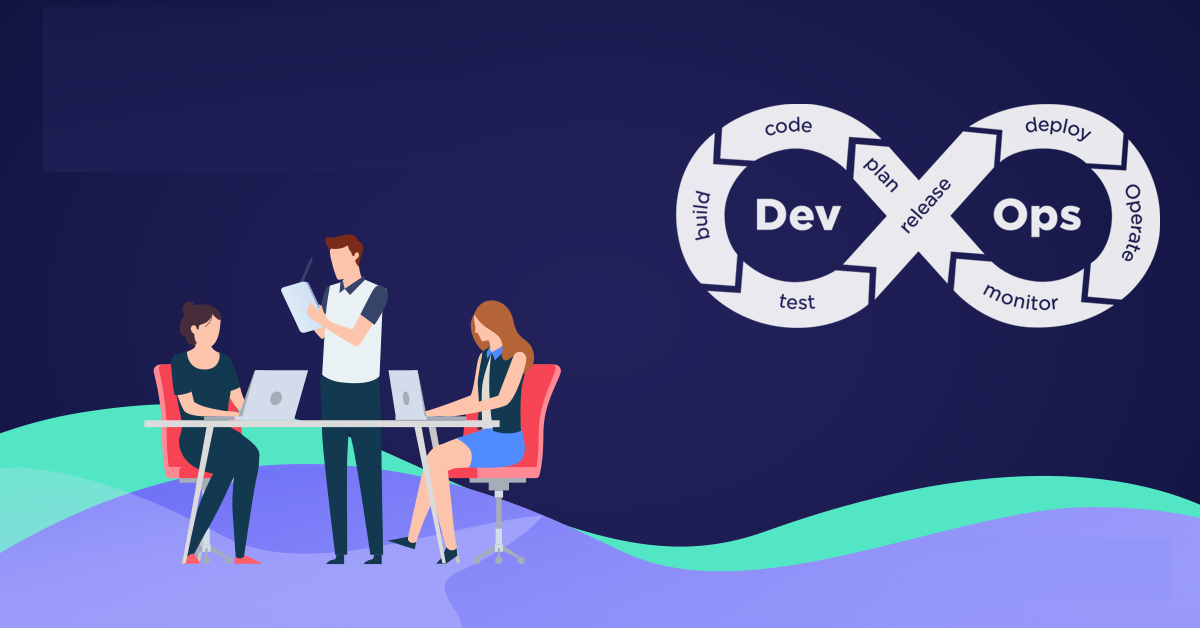You have definitely heard about DevOps methodology and how it helps automate the software delivery and infrastructure management. However, this is the result of DevOps transformation, not its main goal. The main goal of DevOps adoption is a tectonic shift in business culture, communication and attitude to collaboration. As a provider of DevOps managed services, IT Svit has ample experience helping businesses of all sizes leverage DevOps benefits — and today we explain what is DevOps methodology needed for.
Innovation means changing something that works for something that works better. This is impossible without experimenting, and every experiment has a risk of failure.
In traditional software development culture, risk minimization is the priority, and if something fails, the main task is to prove you are not guilty and put the blame on someone else. Naturally, nobody wants to be a scapegoat, so innovation is quite limited and slow-paced. More often than not it happens under a direct order from the managerial body and under a guarantee that you can fail a bit before succeeding. But what if you fail a lot?

This is why the attitudes and communications between different teams in an enterprise IT department are best described as “throwing the problem over the wall”. When you consider the cost of time involved in experimenting and the cost of computing resources required to test some theory and fail — you clearly see why “innovation” and “enterprise” are nearly antonyms. Well, at least it was this way before enterprises started adopting DevOps en masse, and Forrester named 2017 the year of Enterprise DevOps.
DevOps is a methodology and culture of collaboration and communication on all stages of the software delivery lifecycle, from initial product design all the way to monitoring the product in production and gathering feedback for new updates. This is achieved by following these 3 main DevOps principles:
- Blameless postmortem. Failure is not bad, it is a market for a room for growth. The main task after failure is not to put the blame on someone, but to improve the system to ensure such failure does not occur in the future.
- Infrastructure as Code. Using virtualized cloud infrastructure means all the computing resources can be configured as code, using Terraform and Kubernetes manifests. This way you can test new ideas and experiment without wasting too much money on manual infrastructure deployment and configuration — and the only thing needed to recover from failure is to delete the virtual infrastructure and deploy it anew. This makes the cost of error negligible and opens the way to innovation.

Common goals mean common success. The task of the developer, QA and DevOps engineer is the same under this methodology — delivering value at a stable pace. They have to communicate and collaborate from the very start of the project. The DevOps explains how best to structure the product to make it easier to manage in production (dockerized monolith application or a bundle of loosely coupled microservices interacting via APIs), the developer builds the software accordingly and performs automated unit and integration testing so that QA engineer can concentrate on high-level tests — functional, regression, user acceptance, etc.
This way, your team can align its efforts to help reach your business objectives on time. When all team members combine their efforts and work on improving your products, workflow and infrastructure — your chances to succeed long-term grow exponentially, as you are able to provide uninterrupted positive end-user experience to your customers. This is what DevOps methodology is needed for!



